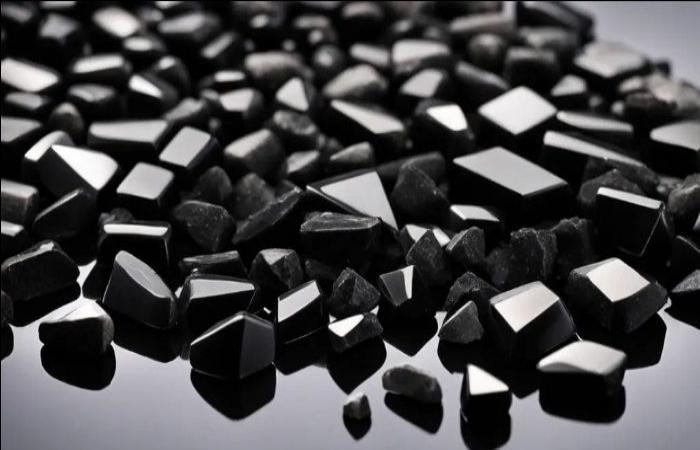In my decades studying imperial seals across Eastern civilizations, I’ve handled countless mineral specimens used for official stamps. None fascinate me more than black tourmaline – a stone revered by seal makers and energy workers alike. This guide will teach you authentic techniques for working with black tourmaline, blending modern crystal practice with forgotten seal lore.
Understanding Black Tourmaline’s Unique Nature
The Mineral That Breathes Energy
Black tourmaline possesses remarkable scientific properties that ancient seal makers instinctively understood:
It generates subtle electrical charges when pressed or heated, much like the pressure applied when stamping an official seal. This piezoelectric effect explains why the stone feels “alive” to sensitive handlers.
Historical records from the Ming Dynasty’s seal workshops note how uncut tourmaline specimens were kept near new seals to “stabilize their spirit.” Modern geology confirms these stones emit beneficial far-infrared radiation.
Why Shape Matters
The form given to black tourmaline changes how it interacts with energy:
- Raw chunks work like provincial seals – offering broad, general protection
- Tumbled stones function like personal seals – gentle yet effective
- Carved pyramids act like imperial seals – focused and powerful
A Song Dynasty seal manual advises: “The stone’s cut should match its purpose, as a sword fits its scabbard.”
Practical Techniques from Seal Traditions
Cleansing Methods Used by Imperial Seal Keepers
Morning Dew Purification
Place your stone outdoors at dawn to collect dew, then wipe clean at sunrise. The Forbidden City’s seal keepers used this method monthly, especially before important ceremonies.
Incense Smoke Consecration
Pass the stone through sandalwood smoke three times clockwise. Palace records specify this should be done while facing east, recalling how new seals were first presented to the rising sun.
Moon Water Bathing
Submerge the stone in spring water under a full moon. This technique appears in Tang Dynasty seal maintenance scrolls, with the added instruction to whisper the stone’s purpose to the water.
Charging Practices from Ancient Workshops
Earth Burial Method
Bury your stone for three days in clean soil. Seal artisans would “rest” overworked seal stones this way, noting how they emerged “refreshed.”
Crystal Cluster Charging
Place on a bed of clear quartz points. The Qing Dynasty’s jewelers stored particularly important seals this way when not in use.
Sunlight Activation
Brief morning sun exposure (no more than 30 minutes). Historical texts warn against prolonged exposure, comparing it to “fading an official document.”
Modern Applications with Ancient Roots
Creating Protective Barriers
Doorway Guardians
Place stones at entry points, mimicking how city gates displayed seal impressions. Historical accounts describe this creating an “invisible wall” against negative influences.
Travel Protection
Carry a stone in your left pocket – the traditional position for personal seals when journeying. Ming Dynasty travel permits specifically instructed this placement.
Sleep Sanctuary
Keep a stone under the bed’s northeast corner. Palace sleeping chambers always stored the Emperor’s personal seal in this position when he retired.
Advanced Energy Work
Combining Stones Like Imperial Seal Sets
The Three Powers Arrangement
Pair black tourmaline with:
- Clear quartz (for amplification)
- Rose quartz (for compassion)
This recreates the signature seal set of Empress Wu Zetian
The Five Elements Grid
Arrange stones with:
- North: black tourmaline (water)
- South: red jasper (fire)
- East: green aventurine (wood)
- West: white quartz (metal)
- Center: yellow citrine (earth)
Based on the elemental seal display in the Hall of Heavenly Purity
Programming Your Stone
The Seal Carver’s Method
Hold the stone and:
- Breathe deeply three times
- State your intention clearly
- Visualize the energy entering like ink soaking into seal paper
Adapted from 14th century seal consecration rituals
Common Pitfalls and Their Solutions
Energy Drain Issues
Overuse Fatigue
Like imperial seals that needed rest after heavy use, your stone may require periodic cleansing. Signs include feeling “heavy” or less effective.
Environmental Stressors
Electronic devices can overwhelm the stone’s natural rhythm. Give it regular breaks from WiFi routers and computers.
Physical Care Concerns
Surface Staining
Clean gently with a soft brush and distilled water – the same method used for jade seals in humid climates.
Chips and Cracks
Even minor damage affects energy flow. Consider retiring severely damaged stones, just as cracked seals were ceremonially destroyed.
Conclusion
Working with black tourmaline connects you to an unbroken lineage of stone wisdom. By applying these techniques – many preserved in obscure seal keeper manuals – you honor ancient traditions while addressing modern needs. Remember what the great seal master Wang Xizhe wrote in 982 AD: “A properly kept stone becomes more than mineral; it becomes a living record of its keeper’s journey.”
For those wishing to deepen their practice, I recommend studying the “Jade Seal Maintenance Protocols” held in the National Palace Museum archives. There you’ll find countless other connections between seal lore and crystal work waiting to be rediscovered.
Related topics:
Does Tourmaline Absorb Negative Energy?
Can Pink Tourmaline Be Heated? What You Need to Know
How to Charge Black Tourmaline: 7 Effective Methods


